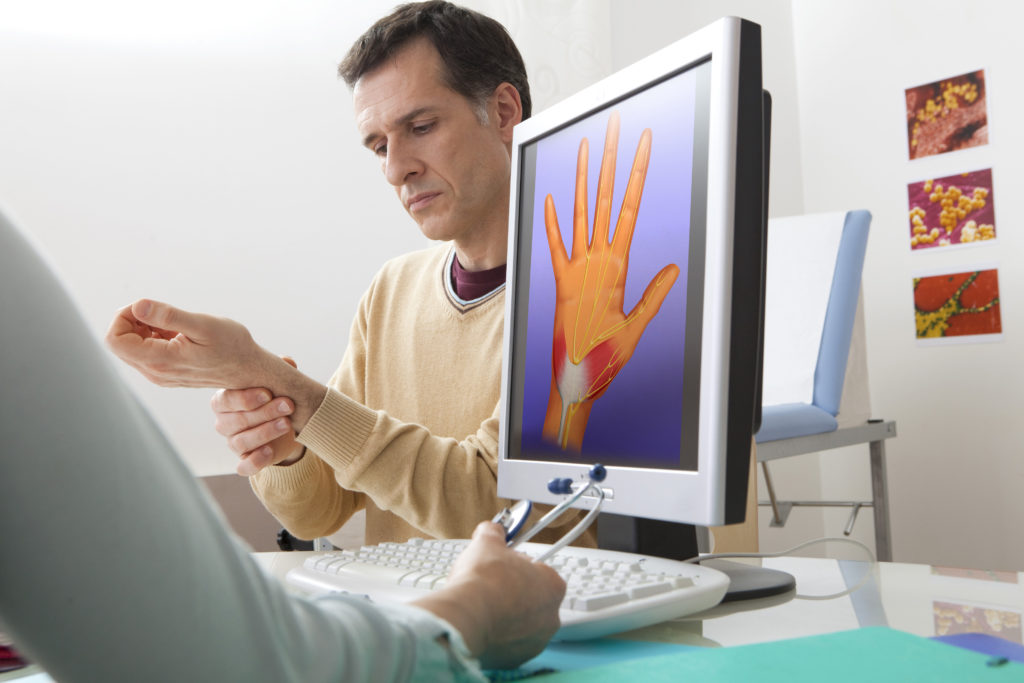What is Carpal Tunnel Syndrome And How Do You Treat It?

Carpal tunnel is a very common condition that causes pain, numbness and weakness in the wrist and the hand. Carpal tunnel syndrome can affect the person’s ability to use their entire arm, depending on how severe their carpal tunnel is.
Carpal tunnel is caused by pressure on the nerve at the base of the palm; otherwise known as the median nerve. Your hands see constant use and this means you are constantly putting pressure on your hands and wrists. In some instances surgery may be required if you have a severe case of carpal tunnel syndrome, however physical therapy can often relieve pain and numbness, and even help to restore normal hand, wrist and arm use while avoiding surgery.
What Exactly Is Carpal Tunnel Syndrome?
Carpal tunnel syndrome is the narrowing of the passageway on the palm side of your wrist. This passage protects the median nerve, as well as tendons that help you to bend your fingers. When that tunnel narrows, you may find that nerves or tendons swell and take up more space, therefore taking space away from the median nerve. Pressure on this nerve causes weakness in the wrist and hand and numbness or tingling in the fingers. Oftentimes the most affected fingers are the thumb, index and middle fingers.
Carpal tunnel syndrome is common in professions like assembly-line work and it is common in jobs that require the use of hand tools, especially tools that vibrate. Too much keyboard use can also cause carpal tunnel syndrome, even holding mobile devices, hand-held video games, sewing, or playing games or sports can cause it as well.
Signs And Symptoms of Carpal Tunnel Syndrome
CTS often starts gradually, sometimes you might wake up with numbness, tingling or burning in your thumb, index finger or middle finger. People often report feeling the need to “shake out their hands” to relieve the feeling.
The symptoms often worsen as the day draws on:
- You may find yourself having trouble grasping heavy objects.
- You may even have trouble using the computer or holding a cell phone.
- You may have trouble gripping something for long periods of time.
Hand weakness and constant numbness can occur if the pressure continues to go untreated. You may find you drop things without expecting to drop them.
What Can A Physical Therapist Do?
Your physical therapist that treats your CTS should be someone you trust and know has experience with your condition, such as the therapists at AmeriWell. Your physical therapy program is often tailored to your needs specifically, but you may learn these things:
- How to change wrist positions and when to change them.
- Avoiding bent-wrist positions for long periods of time.
- Proper neck and upper-back posture, to avoid forward-head posture or slouching.
- Safety precautions when using sharp utensils, tools and other implements.
- “Stretch breaks” during your work routine.
Those are basic things that will probably be included in the physical therapy plan of most CTS patients.
